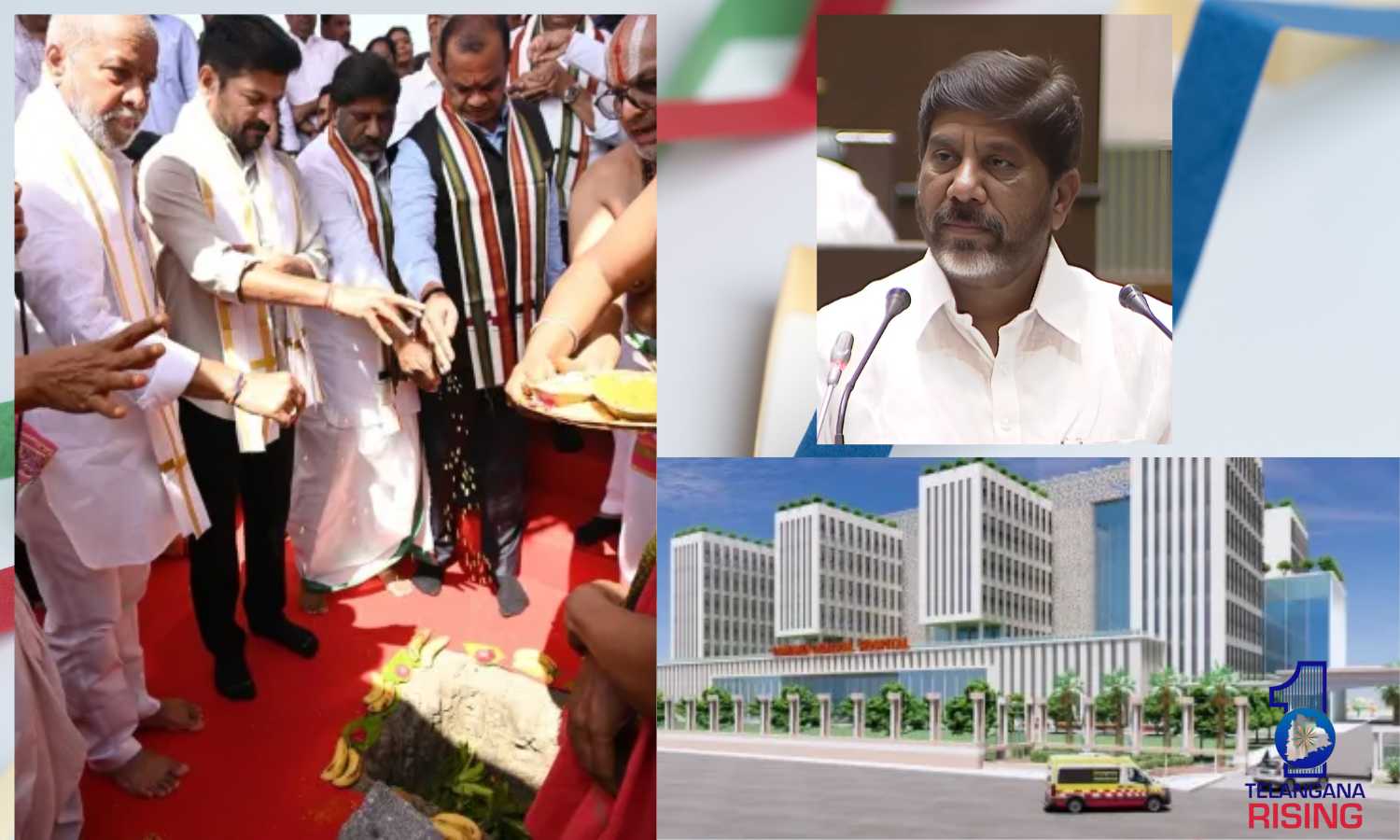HYDERABAD: The Telangana government has announced major reforms in the healthcare sector, focusing on the revamp of Osmania General Hospital and the expansion of the Aarogyasri scheme to provide better medical services to the people. Presenting the 2025-26 budget in the Assembly, Deputy Chief Minister and Finance Minister Bhatti Vikramarka highlighted the government’s commitment to strengthening public healthcare infrastructure, enhancing medical education, and improving access to quality treatment.
A total allocation of ₹12,393 crore has been made for the Health, Medical & Family Welfare Department, marking a significant investment in the sector.

Revamping Osmania General Hospital: A New Era for Public Healthcare
One of the most notable initiatives in the budget is the revamp of Osmania General Hospital (OGH), a century-old institution that has been a key healthcare provider in Hyderabad. The government has approved a ₹2,700 crore modernization project to restore the hospital’s infrastructure and expand its medical facilities.
• The new Osmania Medical Complex will be built on a 27-acre campus, offering cutting-edge healthcare services.
• The hospital will be equipped with advanced medical technology, modern ICUs, and increased bed capacity.
• Special attention will be given to trauma care, emergency services, and super-specialty treatments, making Osmania a state-of-the-art tertiary care center.
• The redevelopment project aims to preserve the hospital’s historical legacy while ensuring it meets modern medical standards.
The decision to revamp Osmania comes after years of neglect, with the previous government failing to address poor infrastructure and overcrowding. The upgradation of facilities is expected to benefit lakhs of patients, particularly those from economically weaker sections.
Aarogyasri Expansion: Higher Coverage and More Medical Procedures
The government has also announced a significant expansion of the Aarogyasri health insurance scheme, which provides free medical treatment to low-income families. Under the new reforms:
• The insurance coverage limit has been doubled from ₹5 lakh to ₹10 lakh, ensuring higher financial assistance for critical treatments.
• The number of covered medical procedures has increased from 1,375 to 1,835, expanding access to specialized treatments.
• Rates for 1,375 existing medical procedures have been increased by 20%, making healthcare services more affordable and sustainable for hospitals.
This expansion is expected to benefit 90.10 lakh families living below the poverty line, giving them greater financial security during medical emergencies. The government has already released ₹1,215 crore for Aarogyasri payments, marking a 50% increase compared to previous years.
Strengthening Healthcare Infrastructure and Emergency Services
In addition to Osmania’s revamp and Aarogyasri’s expansion, the budget includes several key initiatives to strengthen healthcare delivery across Telangana:
• 102 free dialysis centers are operational, benefiting over one lakh kidney patients.
• 95 new dialysis centers have been sanctioned to expand services further.
• 136 new ambulances have been deployed, covering mandals without ambulance services.
• 400 additional MBBS seats have been introduced to address the shortage of doctors.
• 16 new nursing colleges and 28 allied health sciences colleges have been set up, creating 2,640 additional seats in medical education.
A Step Towards Universal Healthcare in Telangana
With these initiatives, Telangana is making significant strides in improving public healthcare. The revamp of Osmania Hospital will provide state-of-the-art medical care to thousands of patients, while the expansion of Aarogyasri will ease the financial burden on poor families.
The government’s health sector boost reflects its commitment to making quality healthcare accessible to all, ensuring that no citizen is denied treatment due to financial constraints. If these projects are implemented effectively, Telangana could emerge as a leader in public healthcare services in India.










